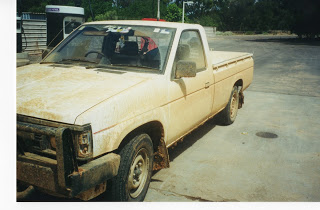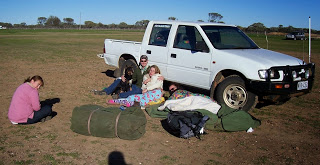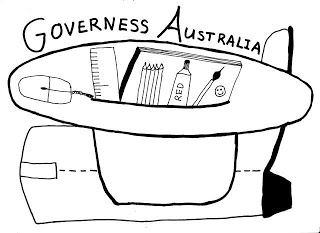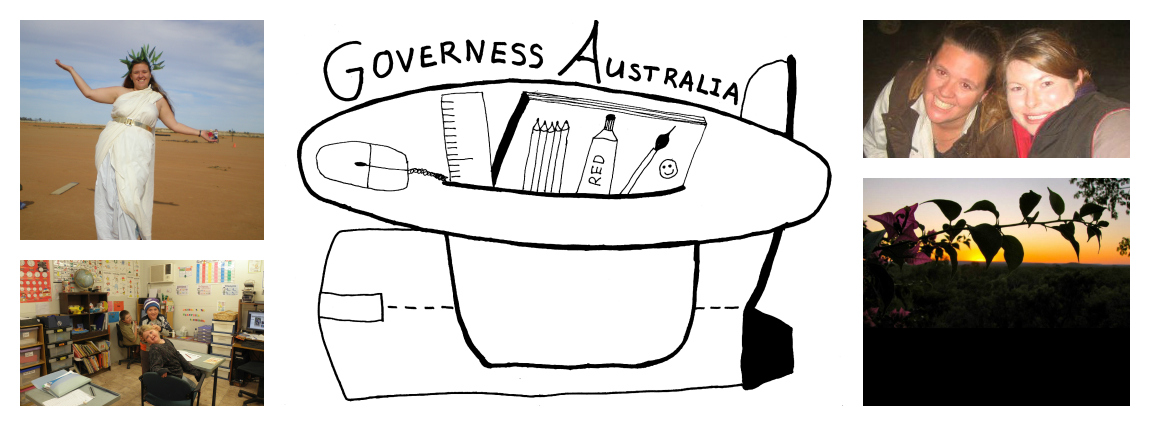Car Blog
The Car Blog covers buying a car for outback conditions, caring for the car, driving in the outback and handy tips. What do you recommend for a newbie going bush?
%20(Custom).jpg)
%20(Custom).jpg)
%20(Custom).jpg)
%20(Custom).jpg)
BUYING A CAR TO SUIT OUTBACK CONDITIONS
I have read and had several conversations over the years about buying the perfect car for going into the outback governessing. There is loads of advice and choices none of which are wrong as it is based on experience of those around. My experience over 30 years of living in the bush plus advice and lectures from 3 generations of bushmen and a mechanic.
People get this idea that they will buy something to use it after governessing.
My first thought at this is ARE YOU SERIOUS?
- Buy a car for what you are doing now and sell it for a cheaper more economical car when you get home. Change over is often just a few thousand dollars.
-
Buy something suitable to outback conditions and it doesn’t have to be brand new.
-
Getting a 4wd is not about going 4wd driving, nobody who lives
in the bush buys it for that. It’s
about being able to get home without your bosses and your
parents worrying that you won’t make it because the car can’t
cope with the conditions.
Over the bulk of my 19 years of governessing I owned 3 cars both
extremely reliable.
1998 to 2002 I had a second hand Nissan Navara D22 2WD ute… these
utes were high off the ground like the current range of 4WD. This
was petrol which did mean that employers weren’t likely to give me
fuel.
2001 a rain before coming in means loads of creative driving in my 2WD ute
2003 to 2010 I had a 1998 2.8L Holden Rodeo which I bought with 135,000km on the clock. It was diesel which is extremely important as employers will over give you this type of fuel. It had no computers which meant if something did go wrong my bosses could order a part and put it in for me at parts cost. My parents bought this car off me and now use it as a second registered car for their property. I remember getting a $20,000 loan for this car and with my savings of around $5000 purchased it including a canopy and a second spare tyre.
I did have in 1997 a Toyota Corolla which did well before my sister used it at UNI. I did have a new Nissan Navara in 2010 but I had extreme problems with the local dealership and sold it.
I bought a VW Amarok in January 2012 which I am extremely happy with now as it is close to turning 5. Only spanner I laid on it has been for services and general maintenance.
Some points to remember
Many of the small 4WD’s are dangerous on dirt roads for inexperienced drivers. They are short wheel base which means they are more prone to skidding sideways and potentially rolling. Larger cars are more stable on dirt roads.
Many small 4WD’s have smaller wheels which means less grip on the road for damp or bull dust conditions. Both of which you will need to drive in at some stage to either get out or get home.
Most are petrol which over the years is more expensive and employers
have less on the station. Employers
are more likely to give or sell you diesel than petrol as it is used
in bulk and they often have bigger tanks. Employers
will often fill your car up if you are transporting the children on
their behalf.
What I look for in a good bush car
* Diesel is a preferred. I personally consider it a must
* It doesn’t have to be brand new …. With a bit of research you could pick up a twincab ute with under 70,000km which has 300,000 or more kilometres left in it.
* Please get a Roo Bar if you can, you will save in insurance company fees. As livestock is on the road at all time of the day and often unavoidable.
* I prefer twin cabs as if you need to use your car to drive
kids around you can and they tend to sit better on rough roads. You
also can put your stuff on the backseat OR buy a canopy and
sleep in the back very comfortable. Ideal
for bring parts for the boss back to the station (happens quite
a bit)
* If you get a single cab then look for a canopy for it as then it would be idea to sleep in and cart you gear around. Many Single cabs do have 3 seats across the front which if needed you can drive the children around or pick the boss up from somewhere you have room.
* I prefer manual over auto as if you do happen to get bogged on
the road it does far less damage to the gearbox and clutch. You
also have more control. This
is purely a PERSONAL preference.
* Buying a ute means you can buys some jerry cans and cart fuel for yourself so that you don’t have to fill up at expensive small town services stations. Legally you are not suppose to cart them inside the car. I have 2 to 3 jerry cans and at times saved $40 in fuel for a trip. Jerry cans are important for those who don’t get fuel from their station.
What I have seen to be reliable in the last few years
RAV5
Over the years I have seen many good RAV5’s including a very good governess mate who on many dirt roads I drove her car at 110km and sat perfectly on the road. They are longer wheel base than the Rav4’s
Triton Twin Cab Utes
In the last 5 years Triton’s reputation is looking great with
loads of good stories and quite a few features that other brands
make you pay extra for. Currently
have a station girlfriend with one and she loves it as do her
bush parents. Sits
on the road well.
Holden Rodeo and other older utes PRE COMPUTERS
In this range I am talking about $10,000 and under with about 200,000km. These still have only completed half their lifespan if they are serviced regular. Very easy for bosses to have a look at if something goes wrong on the road. Even with my small mechanical knowledge I have even learnt how to fix bits on mine it was that easy.
VW Amarok
Costs but if you had the money it is very safe, luxurious and sits on the road perfectly no matter what your driving skills.
Dmax
Quickly building a reputation in the bush is the Dmax. Some station people are getting these as a work ute or secondary town car. They are based on the Holden Rodeo in many ways. I have no personal experience with them just word of mouth.
There are many reliable cars that I have seen and driven out bush which are okay but when it comes to recommending I just couldn’t for outback roads on a regular basis. Some of the options above I wouldn’t use myself but they are a realistic and safe option for others. In the end money will dictate your choice and there are loads of different ideas out in the bush community.
Quick Tips on Buying a Car
While I could give you loads more advice on purchasing a car
I am only going to give a few brief points I have learnt in
the last 3 years in which I have bought two new cars both of
which were stressful as far as getting a loan when working
through in home care on an ABN.
- When you buy a car your deposit should be one third of the total price and the rest can be a loan. This is relevant for new and used cars but most importantly new as new cars lose a lot of value in the first year.
- Always get a secure loan with your car if you can as security if borrowing an amount over $15,000,cheaper interest by far and can be done for both new and used cars.
- If you buy a ute they hold value better and banks are far more favourable to things that hold value. New cars lose value immediately and will drop in the first year often by $10,000 banks know this even if you don't and are not keen on loans worth more than the value of the car.
- I went to my own bank first as they gave me a better deal because they could see my responsible management of my credit card and finance.
- Comprehensive car insurance will be required for all cars with a loan.
- In Home Care educators before going for a loan should get a letter from their employer stating how much they earn including extras. How long they have worked there and what the job positions is along with contact details and ABN.
- Wage earners more easily apply for loans with just a payslip or letter from employer and more likely to get a loan than ABN holders which need two years of tax reports.
CARING FOR YOU CAR and DRIVING CAREFULLY
Simple Maintenance
Check water for the radiator and oil for every trip. Get someone to show you how to do this.
Check your tyre pressure and know what each tyre needs.
Be able to change a tyre and know how to safely jack a car up.
Every 5000 to 8000km have the car serviced, as oil gets older it deteriorates and causes wear on the motor.
Get fuel filters and air filters changed with each service as outback conditions mean more dust in the systems.
Check all equipment works including jack.
Do not pump your tyres up to hard if travelling on dirt!! Always
remember to put the pressure down for the dirt, then if you do a
big trip on the bitumen pump them up again.
Travel Kit
Potential toolbox
items: Jumper
leads, a small spanner set, set of pliers and a shifter, air
compressor, thin wire as you never know when you may need to tie
something up, rope, silver insulation tape, WD40, Jerry can with
a funnel or a siphon hose, pocket knife, zip ties and a rag
Get a trolley jack... so much easier and safer to use than the
jack in the car already. Also put jacks in the toolbox where
they are easily accessible. Nothing worse than unpacking a car
to get to the jack and tools.
An after market owners manual - often have basic trouble shooting and simple instructions to fix - basic tool kit invluding hose clamps + soap is an excellent temporary plug for hole in fuel tank, fix a slipping fan belt or ac belt by spraying antiperspirant deodorant like rexona etc. on the belt.
A small plastic tub or toolbox with emergency supplies; windup
torch, water, longlife food, insect repellant, sunscreen,
contacts for local stations and services of the area. Stay with
the car in case of an emergency. Potential emergency situations
could include being stuck between two creeks, two flat tyres,
etc.
First aid supplies such as bandaids of all sizes, triangle
bandage, compression bandage, tape, scissors, antiseptic cream,
burnaid cream, first aid book, gauze, resuscitation shield,
paracetamol tablets, alcohol swaba, Splinter picker needle,
ventolin, hayfever tablets, cold & flu tablets or any other
relevant medications that could be helpful.
Hema Mapbook is one of the best available. GPSes on phones
often are based on old maps that are computer generated not
current updated by a car actually driving on the road as HEMA
does. Also phones need service. Always go into local tourist
centres for local maps.
If you are going to a remote area in the NT or WA then you may
consider an EPRB (Emergency Personal Response Beacon) in the
vehicle
A UHF is always a good thought. NB Always check with your
employer the best options if considering buying a radio for your
car. In Central Oz many people have bushfire radios not UHF so a
UHF is not necessarily of much use.
A blue tick phone with a phone aerial is a good addition to any
car. If
you don’t want to go with the UHF then at least a good phone
aerial might get service for 50 more kilometres. I used mine at
the station where reception was patchy. Loads
of other bluetick phone options on Telstra both prepaid and
plans. The
aerial I have is a RFI
CDQ2197 - Quick Removable 6.5dBi Bullbar Antenna for my phone
and I bought a passive cradle which is generic to put my phone
in to connect. Go
online and buy an aerial now. Also
have a Bluetooth headset to talk handsfree in the car and at
home as I get some service.
A spare rim so that you have two spare tyres. Many
utes are reasonable generic in the wheel stud pattern so are
interchangeable with different cars.
Fold up chair, esky and swag are not vital to the car but will
be an important part of your life in the outback.
Emergency Situation
Remember an emergency is a potentially life threatening
situation.
If on a mobile in an isolated location and it is an emergency
situation then try 000 and if that doesn't work try 112 (even if
you have no service) which is an International Emergency
Service. It will take a while to answer as it takes a while to
go through. Don't know how well it works as I have never had to
use it.
Have a blanket in the car at all stages. Can be handy if you
have to camp the night while waiting for help or your bosses to
come looking.
Dealing with a HOT CAR
I leave the windows down 15mm on each side when parked in the sun to let the heat escape and it does less damage to the car. Dust does get in even with the windows shut so I clean more. When getting back into a hot car it can smell, this is the chemicals coming from the interior of the car. These can cause cancer so wind all windows down and put the aircon on the get rid of all these smells. This will also let the heat in the car escape.
Staying in contact
Someone should always know your ETA on remote roads. In
over 35 degree days this is most important.
Always message, phone, facebook or email the boss when heading
back to the station. I often update my facebook status from the
last point of reception so I'm uncontactable for as little time
as possible.
Overconfidence kills inexperienced outback drivers
Unless you have been driving in the bush for 10 years or more
then stick to driving at 80 to 90 kilometres on a dirt road even
if you feel the conditions are good.
One second and the wrong reaction could have serious
consequences for a young driver.
WHAT IS YOUR ADVICE TO PEOPLE NEW TO THE OUTBACK?
Updated 18 November 2013


.JPG)

